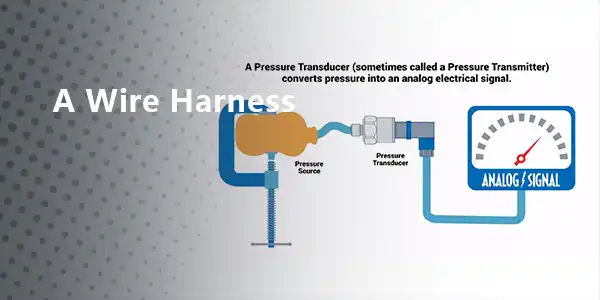Introduction of A Wire Harness
Electrical parts ars a number of parts of an internal or external device that function in a modifiable manner as part of an electrical system. In the engineering machinery field, the components of electrical parts include a wiper motor, power take off switch, wire harness, relays, starter motor, alternator, throttle motor, and so on. Here you will learn more about wire harnesses.
What is a wire harness?
A wire harness, commonly referred to as a cable harness or wiring assembly, is a systematic, integrated arrangement of cables inside an insulating material. The purpose of this assembly is to transmit signals or electricity. Cables are tied together by means of tie-downs, tie-downs, tie-downs, sleeves, electrical tapes, conduits, or a combination of these. The harness simplifies connection to larger assemblies by integrating wiring into a single unit for "plug in" installation.
What is the purpose of a wire harness?
The purpose of a wiring harness is to organize individual wires into a unit, efficiently organize wires and cables as well as transmit power and signals. Harnesses reduce labor time and the potential for human error, allowing technicians to install complex wiring assemblies into small or hard-to-reach spaces. For example, in some modern vehicles, there are about 40 different wiring harnesses, consisting of about 700 connectors and over 3,000 wires. Bundling of wires and cables into a single harness simplifies connection to larger assemblies for plug-in installation as a single unit rather than connecting each individual harness. In short, wire harnesses serve two primary purposes: one is to protect outside factors from harm caused by the flow of electricity and the other one is to ensure wiring systems are organized and straightforward for technicians to understand.
Wire harnesses VS cable assemblies
Wire harnesses are often confused with the cable assemblies, but the two are entirely different. The essential difference between wire harnesses and cable assemblies is their physical characteristics and functions. Wire harnesses provide a cover around individual cables, usually of the same material used in cable assemblies. One can see and remove an individual wire from the braid. In contrast, cable assemblies have multiple wires but are connected to each other by a single outer sleeve. It has only one thick wire. At the same time, a cable assembly normally only has two ends, while a wire harness includes multiple break lines running in many different directions with multiple terminals. Wire harnesses are often used in cars, airplanes, tractors, etc. You can buy a car or tractor wire harness online from many stores. In addition, many of our everyday household products and tools also use wire harnesses. These products are computers, televisions, monitors, microwave ovens and refrigerators. These products use wire harnesses rather than cable assemblies because these products come with a protective sheath, which removes the requirement for additional protection.
 Track Your Order
Track Your Order




